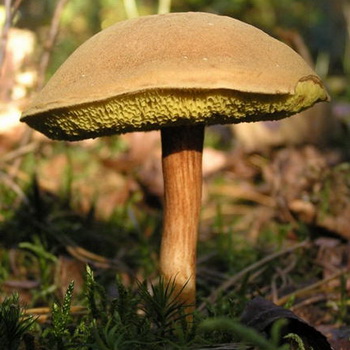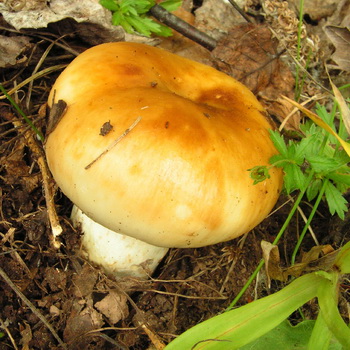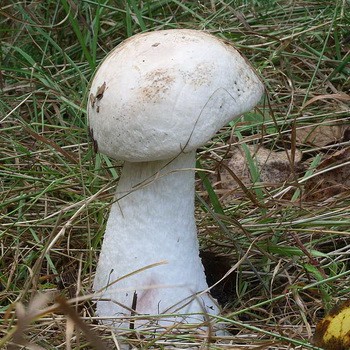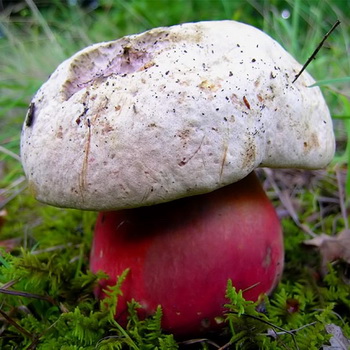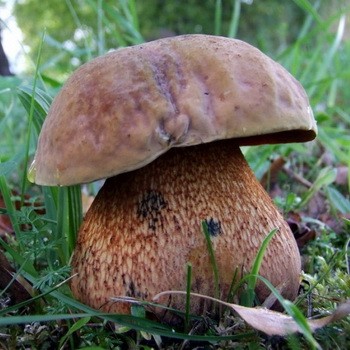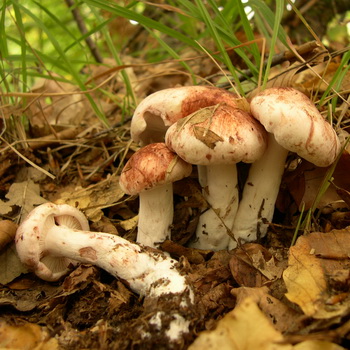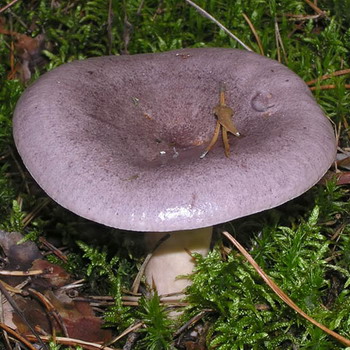Boletus mushroom: photo and description
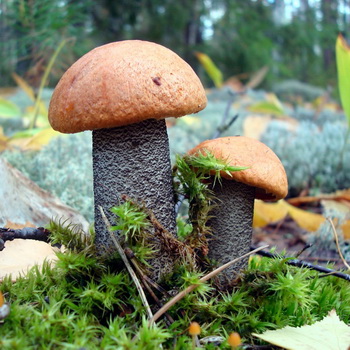
Boletus mushroom is usually placed in an honorable third place in taste after boletus and boletus. If the boletus grows next to the aspen, its hat will, as a rule, be saturated dark red. However, these gifts of the forest live under other trees. If you don’t know what the boletus mushroom looks like, growing near the poplar, you may not recognize it - its hat is faded, a little like the usual dark red one.
On this page you will learn about the types of boletus, their counterparts, the use in cooking and traditional medicine. You can also get information about where the boletus grows, whose neighborhood prefers, and see the photo and description of what the boletus looks like.
Content
Common boletus and his photo
Category: edible.
Hat of ordinary boletus (Leccinum aurantiacum) (5-28 cm in diameter): brown with shades of red or orange. It has the shape of a hemisphere and is easily separated from the leg. The peel is removed with difficulty and only with pieces of pulp.

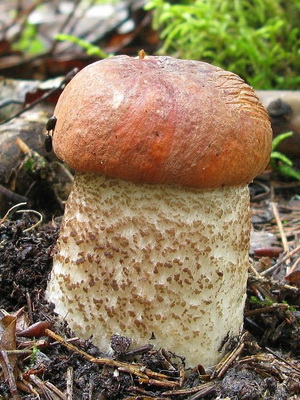
Leg (height 4-18 cm): solid gray or off white. The photo and description of the foot of the common boletus is similar to the foot of the oak boletus - it contains the same fibrous scales, which eventually become almost black.
Tubular layer: loose, white, yellowish or olive in color. Old or wormy mushrooms are dirty gray or brownish.
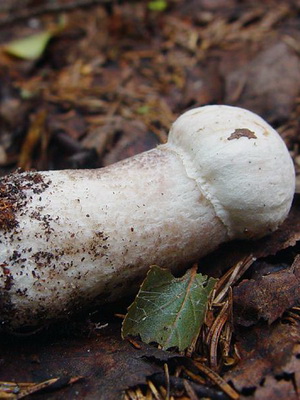
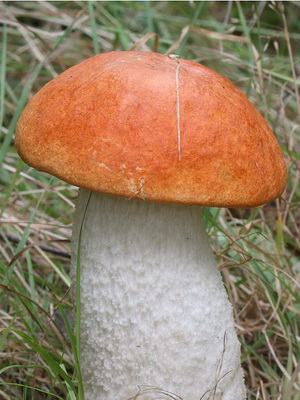
Pulp: fleshy and dense, the young mushroom is elastic, and the old is soft and friable. It is immediately white on the cut, after a few minutes it becomes bluish, and later blackens. It does not have a distinct aroma.


Doubles: edible boletus yellow-brown (Leccinum versipelle) and red-footed (Tylopilus chromapes). The yellow-brown has a lighter hat and flesh, which first turns pink, then turns blue on the cut, and the yellow-leg has a yellow leg.
When growing: from early June to mid-October in many countries of Eurasia, the Caucasus, the Far East, the Urals and Western Siberia.
Where can I find: in deciduous and mixed forests. It prefers neighborhood with aspen, willow, birch, oak and poplar trees. Never grows next to conifers. Occasionally, you can meet in the meadow, not far from the aspen forests.
Eating: in almost any form, only when frying, drying and cooking it gets very dark.
Application in traditional medicine (data not confirmed and not passed clinical trials!): in the form of tincture - an excellent tool for cleansing the blood and skin, which is considered effective against acne.
Other names: krasnik, krasyuk, red mushroom, redhead, aspen.
Depending on the time of occurrence, people call the common boletus "spikelet" (if it is an early mushroom), "stubble" (as the later boletus is called), and closes the season with "leaf fall".
What does an oak boletus mushroom look like
Category: edible.
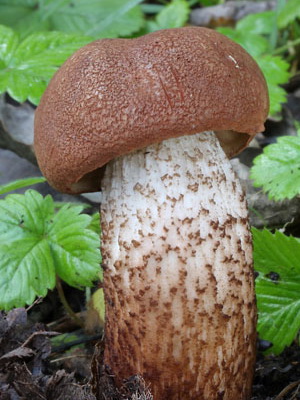
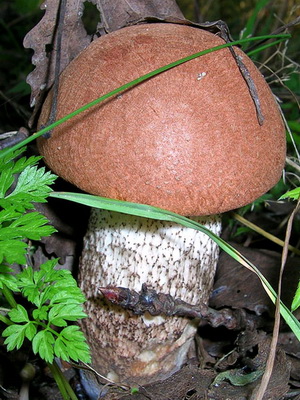
Hat of oak boletus (Leccinum quercinum) (diameter 6-16 cm): chestnut, brown or slightly orange, hemispherical or swollen pads.
Leg (height 8-15 cm): brown or brown, often with small scales. Cylindrical, slightly thickened at the base.
Tubular layer: brown, with very small pores.
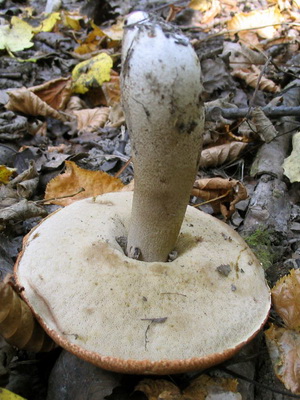
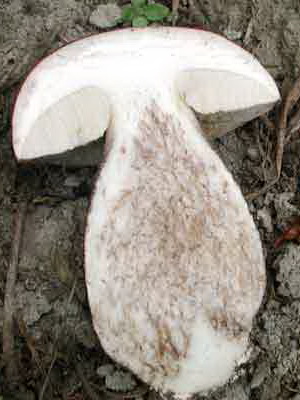
Pulp: very dense, white, with brown or grayish spots. At the cut site and when interacting with air, it turns black.
Doubles: are absent.
When growing: from the beginning of August to the end of September in the countries of the northern temperate zone.
Where can I find: most often in oak forests.
Eating: very tasty in almost any form.
Application in traditional medicine: not applicable.
Other names: the red-headed oak, the oak side.
Description of yellow-brown boletus
Category: edible.
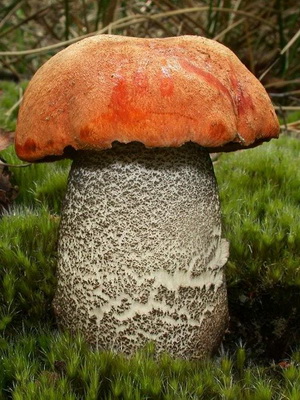
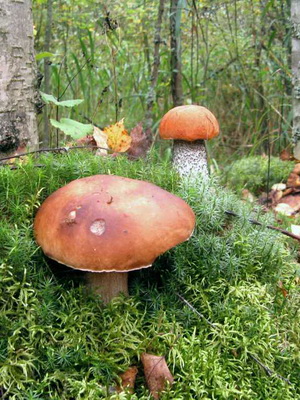
The photo and description of the mushroom of the boletus of this species differs from others in the brightness of the cap. Its diameter is 4-17 cm, most often the hat is yellow-brown, brownish or orange. In young Leccinum versipelle has the shape of a hemisphere, in the rest it resembles a swollen pillow. It is dry to the touch and never sticky or slippery.
Leg (height 6-25 cm): grayish color, with small scales along the entire length, tapers from bottom to top.
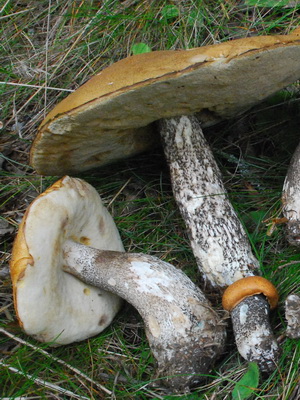
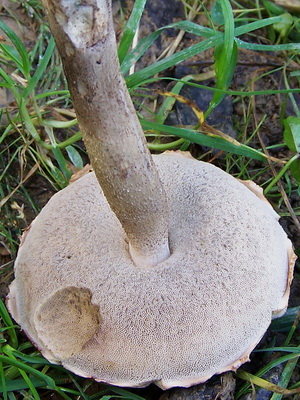
Tubular layer: with small pores of gray or olive color.
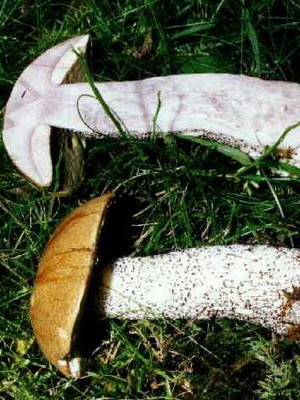
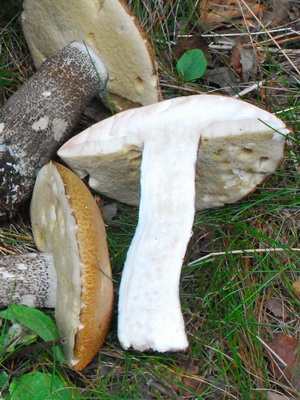
Pulp: very dense, at the place of the cut or break immediately white, gradually changes to greenish in the leg, slightly pink in the hat, and then blue-violet in both parts.
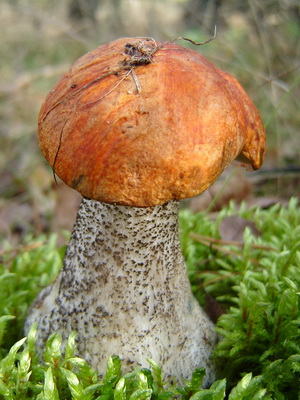
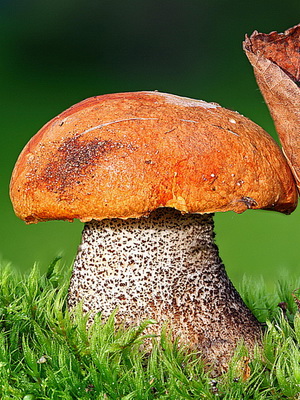
Doubles: relatives, boletus, differ in shades of the hat and the size of the legs or hats.
When growing: from mid-June to early November in northern Europe and the Far East.
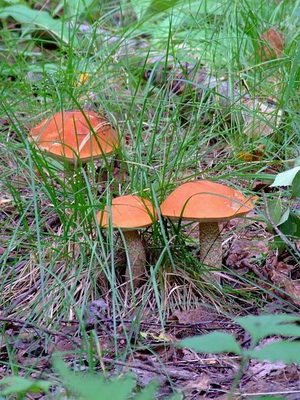
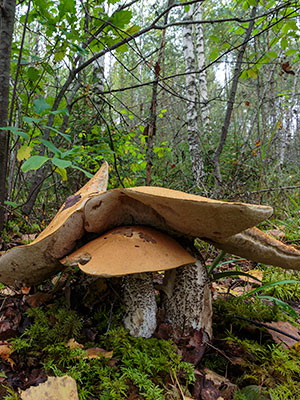
Where can I find: on moist soils of all types of forests, especially in the vicinity of pine and birch.
Eating: delicious mushroom in any form.
Application in traditional medicine: not applicable.
Other names: red-brown boletus, chamomile.
